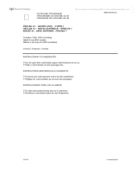“Beyond the Ravi”
Her legs couldn’t carry her further: she had run kilometers followed by Hindu mobs. In her eyes was a pain like in the eyes of those who have been taken suddenly and forcefully from the world they have always known and had lived there over years. There was frowning, a painful look on her face. She turned around and saw that nobody was following her. She was breathless and exhausted, too exhausted even to cry, but she didn’t stop. She had left the dusty road on which she had run so far and a<AWSShad entered a footpath in the field. It was a flowering mustard-field, pale, like melting gold, which swept across miles and miles of land like a river of yellow Light.
She reached a Gurudwara, and saw a denser crowd of yellow-robed men and women and heard high-pitched sequences of whistling, creaking, squeaking, roaring and humming noises. It seemed that people were celebrating something. As she was sure that, the communist mobs can’t suspect a muslim girl in Gurudwara so she joined the crowd.
Every little inch of space there was congested with people. It seemed that from the wintry shades of narrow lanes and alleys emerged a gaily-dressed humanity, thick as a crowd of bright- colored rabbits coming out from their burrows and entering the flooded sea of sparkling silver sunshine outside the village, sped towards the fair. Along the balled and dhol music, cries of ‘Jhatta aai Baisakhi, khetan di hun muk gayi rakhi!’, rent the skies as gaily men and women break into the bhangra and gidda dance to express their joy. The flow of the rhythm was interspersed with chants of "Brrrruuuuaaa", "Chakde phate", "Balle, Balle" or “Shawa - Shawa” by the dancers. Their dresses were as bright and vibrant as the Bhangra dance itself. All people were wearing yellow clothes like bananas. The women were wearing suits, the traditional Punjabi three-piece outfit. Feminine and elegant dresses were tinted with heavy embroideries and mirror work. The Dupattas, scarf wrapped around their necks; were in festive colors and had dazzling and traditional embroideries. The women had further beautified themselves with heavy jewellery of various kinds. The men were wearing yellow colored turbans, made out of silk clothes wrapped around their heads in a sophisticated manner and Kurta Lungi, a customary for men in Punjab.







